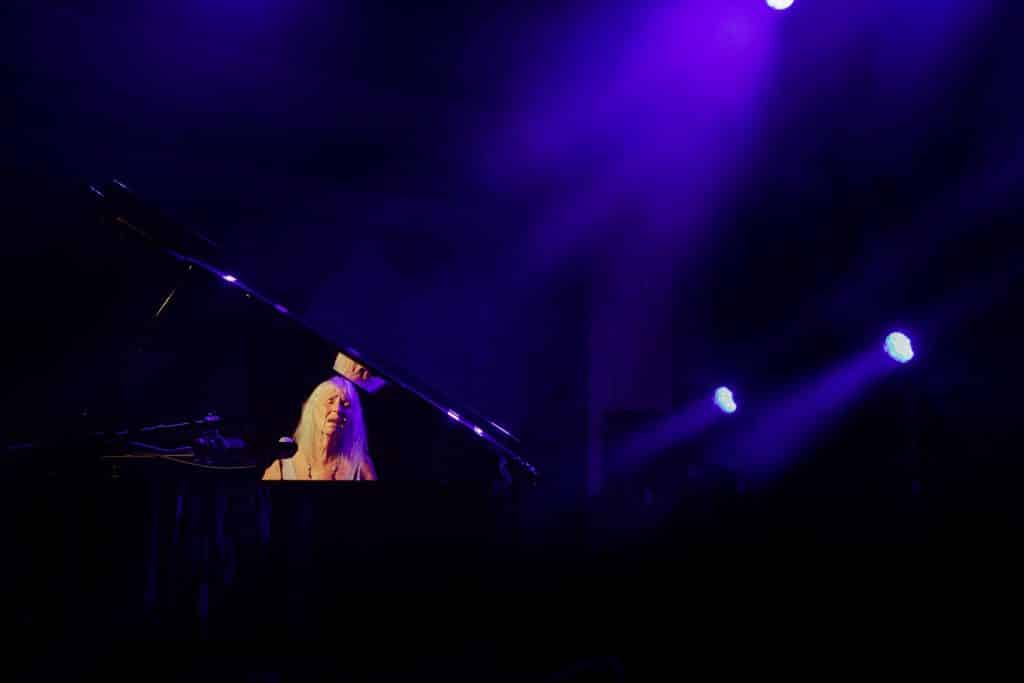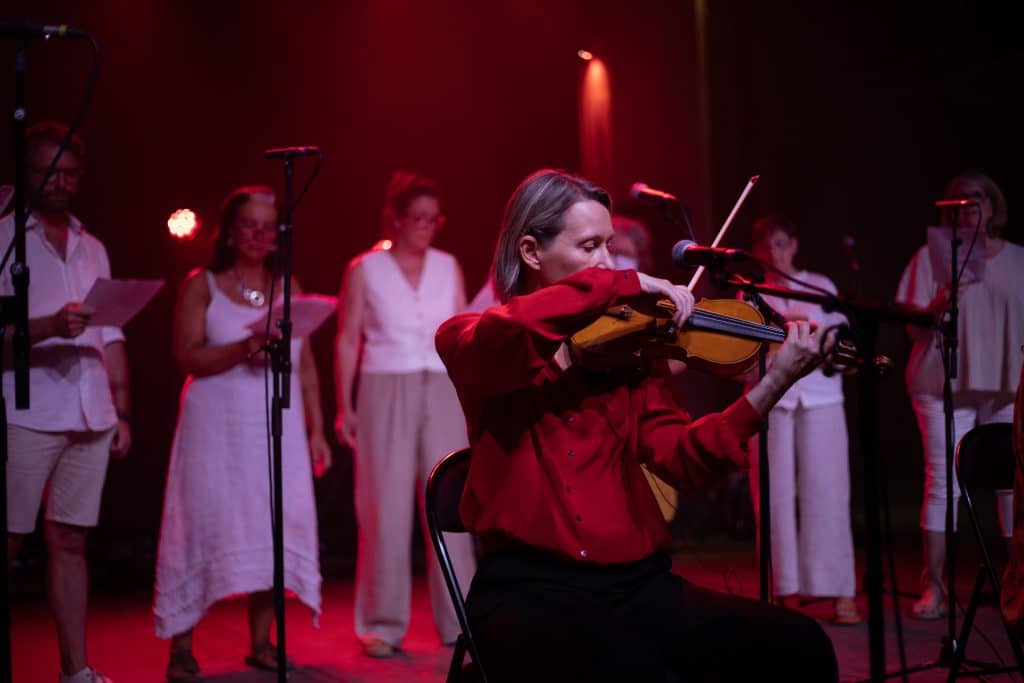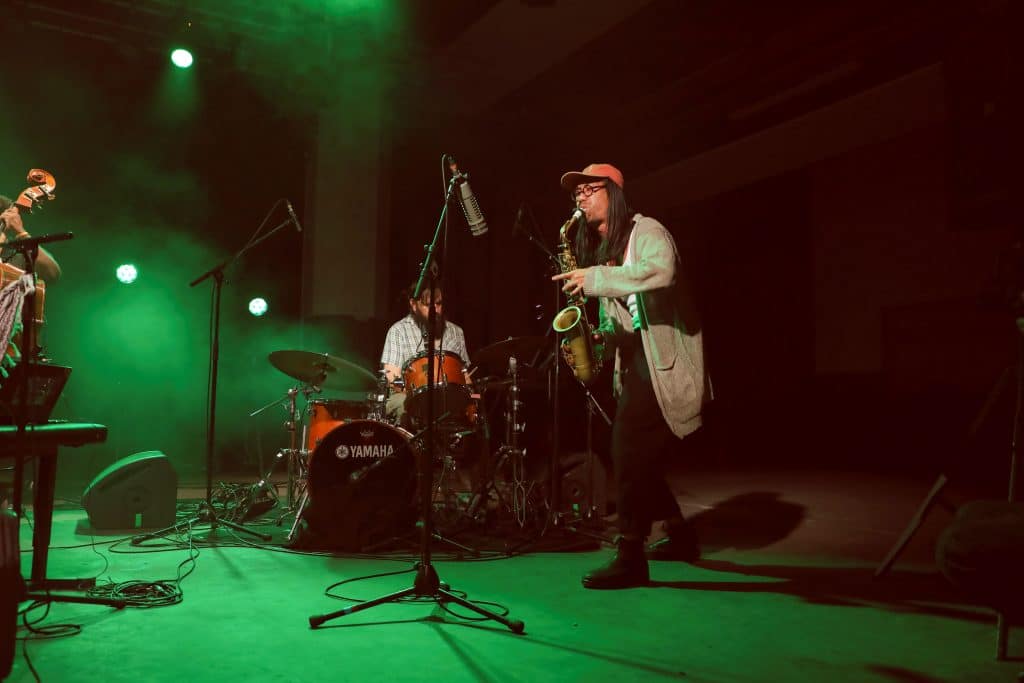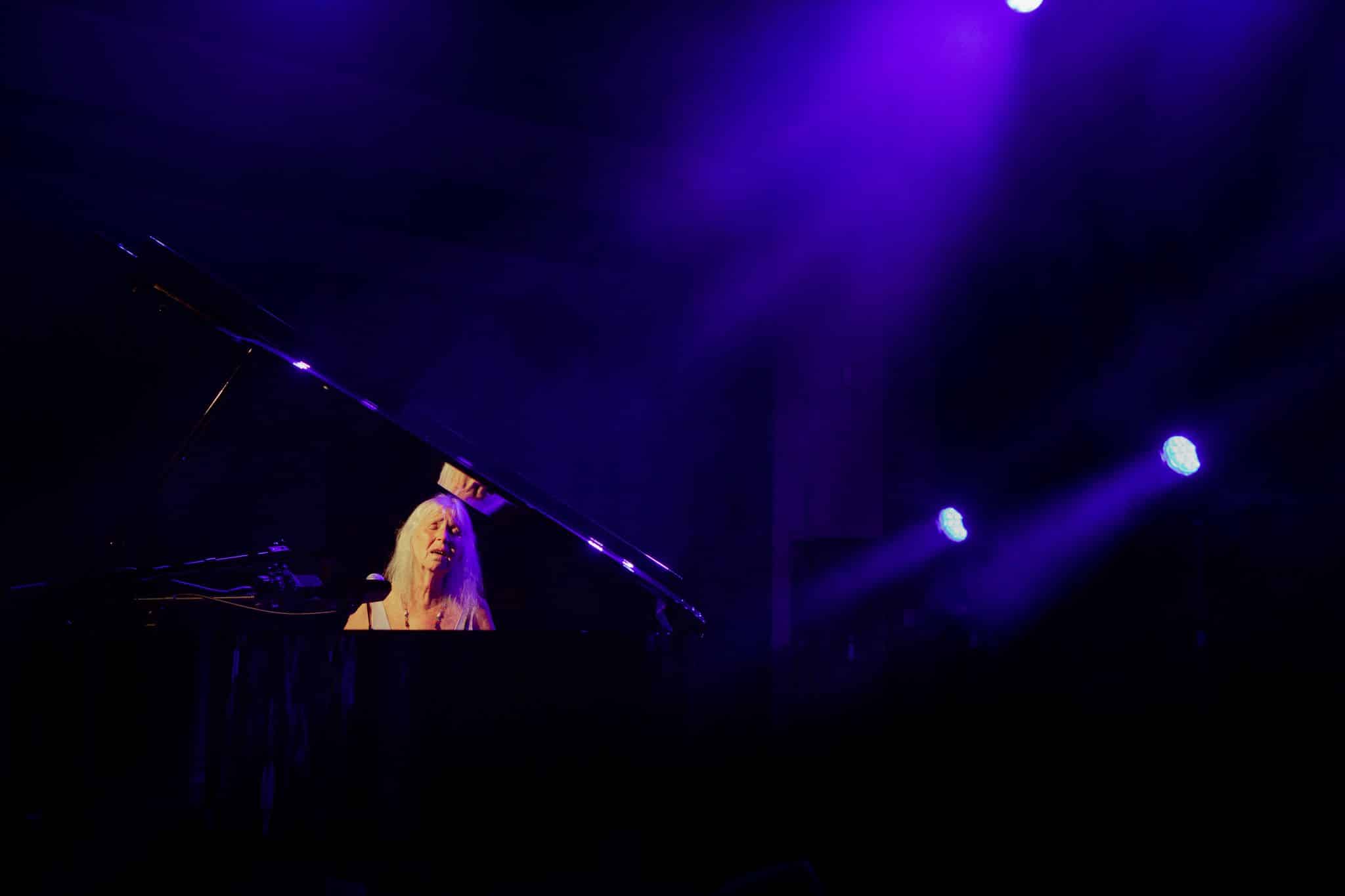Météo Mulhouse Festival
(Six venues in Mulhouse, Alsace. 21-24 August 2024. Review by Tony Dudley-Evans)

The Météo Mulhouse Festival, known as Jazz à Mulhouse from 1983, and under its current name since 2009, has always been known for its adventurous programming. In the past this has meant a focus on free jazz, but since 2019 under the directorship of Mathieu Schoenahl it has moved into a more mixed programme that involves experimental music often involving electronics and post rock. Audiences are growing: attendance this year was considerably greater than last year (reviewed, link below)
Free jazz is, however, still an important part of the programme. The three main concerts on Day 1 captured the essence of the programme. It began with Maggie Nicols solo performing songs, spoken word and tap dances, all with an engaging spontaneity. Maggie was followed by an Italian duo, Deborah Walker (an unusual name for an Italian!) on cello and vocals, and Silvia Tarozzi on violin and vocals. They sang songs originally performed by working class women seeking better conditions, and songs of the Italian resistance during WW2. Walker and Tarozzi have been workshopping with noted French improvisers, Vincent Courtois and Joelle Léandre, and incorporated elements of free jazz into the development of the songs. This worked well with the improvisations bringing out the energy of the songs; it worked particularly well when Maggie Nicols joined them for the final two songs.

Finally, Emilie Škrijelj, a French accordionist, performed her Glitch set; in this she uses electronics and tapping of the body of the instrument to transform the accordion into a percussive instrument. This was an impressive and absorbing performance of what I assume to be a carefully planned rather than an improvised set.
Highlights on Day 2 were two acts from the contemporary New York scene: Ava Mendoza’s solo set featured her songs rooted in the blues accompanied by her blues rock guitar playing. Amirtha Kidambi’s Elder Ones featured Kidambi’s tribute to the trumpet player Jaimie Branch, who had died exactly two years before, through songs, each one dedicated to a particular cause, Palestine, workers’ rights, Indian farmers protesting against government policies. The subtle electronic manipulation of the sound of the two saxophones and the powerful drumming of Matt Sawyer gave a strong impetus to the set.

Two contrasting approaches to the integration of electronics were noteworthy. The Sleep Of Reason Produces Monsters performing the final set of the festival matched the powerful electronic sounds of Mariam Rezaei and Gabriele Mitelli on turntables with the equally powerful drumming and percussion of Lucas König and the alto saxophone of Mette Rasmussen. Together they created an amazing whirlwind of sound; it was all very exciting, my only concern being that the turntable sound plus the drums often overwhelmed the sound of the saxophone and Mitelli’s pocket trumpet when he switched to that.
The Tennota duo of Grundik Kasyansky on electronics and Tom Wheatley on double bass performed a nicely subtle approach to the integration of improv and electronics with a nice flow of ideas swapped between the two players.
One interesting development apparent at the festival is the increasing presence of improvising pipes players using electronics to augment or manipulate the sound of the pipes. Carme Lopez’s set was disappointing in that she only used her Galician pipes very briefly to feed the electronics she was focussing on. Lyon-born, Montreuil based sound artist Clément Vercelleto used the pipes in a similar way to set up his electronic sounds, but played an excellent solo on the pipes at the end of the set. Glasgow-based Harry Gorski-Brown, by contrast, played the pipes throughout his set apart from one piece with violin. His approach is a mix of tradition and innovation with the sound of the pipes gently augmented with electronics accompanying traditional songs, sung mostly in Gàidhlig.
Gorski-Brown’s set took place in the Temple de Saint Étienne, a beautiful church with stunning stained glass windows. This was also the setting for two other solo sets, one by American saxophonist Patrick Shiroishi and the other by pianist Ingrid Schmoliner. The latter played an hour long engaging minimalist piece using a prepared piano to create gentle electronic effects.
A final point: the British – and especially the Scottish – representation in the programme was strong; we have mentioned Maggie Nicols, Tannota, Harry Gorski-Brown, and Mariam Rezaei who was joined by her partner, Stewart Smith, in a DJ set that closed the festival late on the Saturday night. There was also a set from the post rock group from Scotland, Still Houseplants.
Tony Dudley-Evans was a guest of the Météo Mulhouse Festival which is supported by the French national jazz agency AJC
LINK: Review of 2023 Festival


